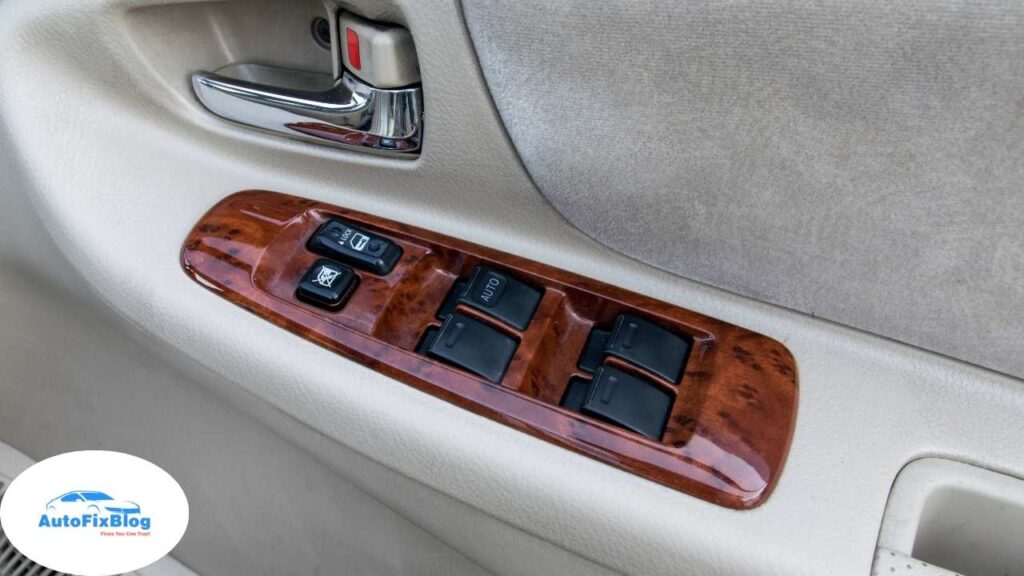Modern cars come equipped with numerous features that make life easier for drivers, and one of those handy features is the small button located on the car door handle.
If you’ve ever wondered how to use the little door button on the car, this article will provide an in-depth look at its functionality, how it improves security, and how to make the most out of this simple but effective tool. We’ll also touch on common car issues related to these buttons and offer solutions to keep everything working smoothly.
What Is the Little Door Button?
The little door button, commonly found on newer vehicles, is part of a keyless entry system. It’s a small button, typically located on or near the exterior door handle, that allows you to lock and unlock your car without having to manually insert a key or use a key fob button.
In essence, the button works by communicating with your car’s key fob via a wireless signal, allowing you to access the car as long as the key fob is within a certain range. This feature adds convenience and security to the car’s locking mechanism.

How Does the Little Door Button Work?
Understanding how to use the little door button on the car is simple, but knowing how it works will help you appreciate its functionality and avoid potential problems.
The button works in conjunction with the key fob in your pocket, purse, or hand. When you approach the car with the fob nearby, the vehicle’s system recognizes it. If you press the little button on the door handle, the signal sent between the car and the fob will either lock or unlock the doors, depending on the current state of the vehicle.
How it operates:
- Locking the car: After exiting the vehicle, press the little door button to lock all the doors. You’ll hear a beep or see the lights flash, signaling that the car is locked.
- Unlocking the car: When you return to the car with the fob in your possession, simply press the little door button once to unlock the driver’s door, or press it twice to unlock all the doors.
This button helps reduce the need to fumble around for your keys, adding convenience, especially when your hands are full. However, proper usage is crucial to ensure you don’t accidentally lock yourself out or leave the car unsecured.
How to Use the Little Door Button on the Car
Here’s a step-by-step guide on how to use the little door button on the car properly. These tips will help you avoid any mistakes and maximize the benefits of your keyless entry system.
1. Ensure the Key Fob Is Nearby
One of the key components of using the door button is having the key fob within range. Most systems require the fob to be within about 2-3 feet of the car door for the button to work. Keep the key in your pocket, bag, or hand to ensure it communicates with the vehicle’s system.
2. Lock the Car With a Single Press
When leaving your car, you can lock it by pressing the button on the door handle once. Some vehicles will emit a beep or flash the lights to confirm that the car is locked. It’s important to check for these signals to ensure the car is secure.
If you’re concerned about security, always double-check the lock status by trying to open the door handle after pressing the button. If the car doesn’t open, you’ve successfully locked it.
3. Unlocking the Car
When returning to your car, press the button on the door handle once to unlock the driver’s side door. If you need to unlock all doors, press the button a second time. This feature is especially useful for added safety, as unlocking only the driver’s door prevents unauthorized access to the other doors.
4. Dealing With a Dead Key Fob Battery
One common problem with keyless entry systems is a dead key fob battery. If your key fob battery dies, the little door button won’t function. In this case, you’ll need to use a traditional key, which is typically hidden inside the fob, to manually unlock the door. Check your owner’s manual for instructions on accessing the emergency key and using it on the door lock.
5. Avoid Accidental Lockouts
Although the system is designed to prevent accidental lockouts, it’s still important to be mindful. For instance, if your key fob is inside the car but the door closes and locks, you could find yourself locked out. To avoid this, make sure you always have the key fob with you when leaving the vehicle.
Keyless Entry and Security
Keyless entry systems, including the use of the little door button, offer a high level of convenience, but they also raise some security concerns. Here are some important security tips:
Signal relay attacks: Thieves can use devices to extend the range of your key fob signal, allowing them to unlock and start your car without the fob being nearby. To prevent this, store your key fob in a signal-blocking pouch (also known as a Faraday pouch) when you’re not using it.
Lock confirmation: Always make sure your car locks properly by observing the lights flashing or listening for the confirmation beep. This ensures that the vehicle is truly locked.
Turn off passive entry: If you’re concerned about security, some vehicles allow you to disable the passive keyless entry feature, requiring you to use the key fob button for unlocking and locking the car. Check your owner’s manual for instructions.
Troubleshooting Common Problems
Like any feature, the little door button can sometimes experience problems. Here’s how to troubleshoot common car issues related to the keyless entry system.
1. Button Not Working
If the button on the door handle doesn’t respond when pressed, the issue could be related to the key fob battery. A dead battery will prevent the fob from communicating with the vehicle. Try replacing the fob’s battery and test the button again.
If the problem persists after changing the battery, the car’s receiver might not be recognizing the signal, or there could be interference from other devices. In this case, it may be necessary to visit a mechanic or dealership to diagnose the issue.
2. Car Won’t Lock
If pressing the button on the door handle doesn’t lock the car, check if any doors or the trunk are still open. Keyless systems often prevent the vehicle from locking if a door isn’t fully closed.
If all doors are closed but the car won’t lock, you may need to reset the key fob or check the car’s battery health, as low battery power can impact the functionality of keyless systems.
3. Intermittent Functionality
Sometimes the little door button works only intermittently. This could be due to environmental factors, such as wireless signal interference or extreme temperatures affecting the system. You may also want to inspect the door handle button for any signs of wear or physical damage, as this can affect its performance.
Advantages of Using the Little Door Button
Using the little door button on the car offers several advantages, particularly in terms of convenience and security. Here are some key benefits:
- Hands-free access: With the key fob in your pocket or bag, you can lock and unlock the car without needing to fumble with keys. This is especially useful when your hands are full or in inclement weather.
- Added security: The ability to lock and unlock only the driver’s door enhances security, preventing unauthorized access to the entire car.
- Prevention of accidental lockouts: Many keyless entry systems are designed to prevent the car from locking if the key fob is inside the vehicle, reducing the chances of getting locked out.
Understanding how to use the little door button on the car is a simple but essential part of mastering your vehicle’s keyless entry system. With this feature, you can enjoy the convenience of locking and unlocking your car with just a press of a button, all while keeping your key fob safely tucked away in your pocket or bag.
By following the tips outlined in this guide, you’ll be able to use the door button effectively, troubleshoot common issues, and enhance your overall driving experience. Whether you’re avoiding lockouts, addressing car issues, or just making your daily routine a little easier, mastering the use of this small but powerful button will help keep your car secure and convenient to access.



